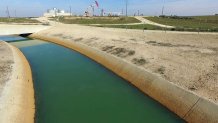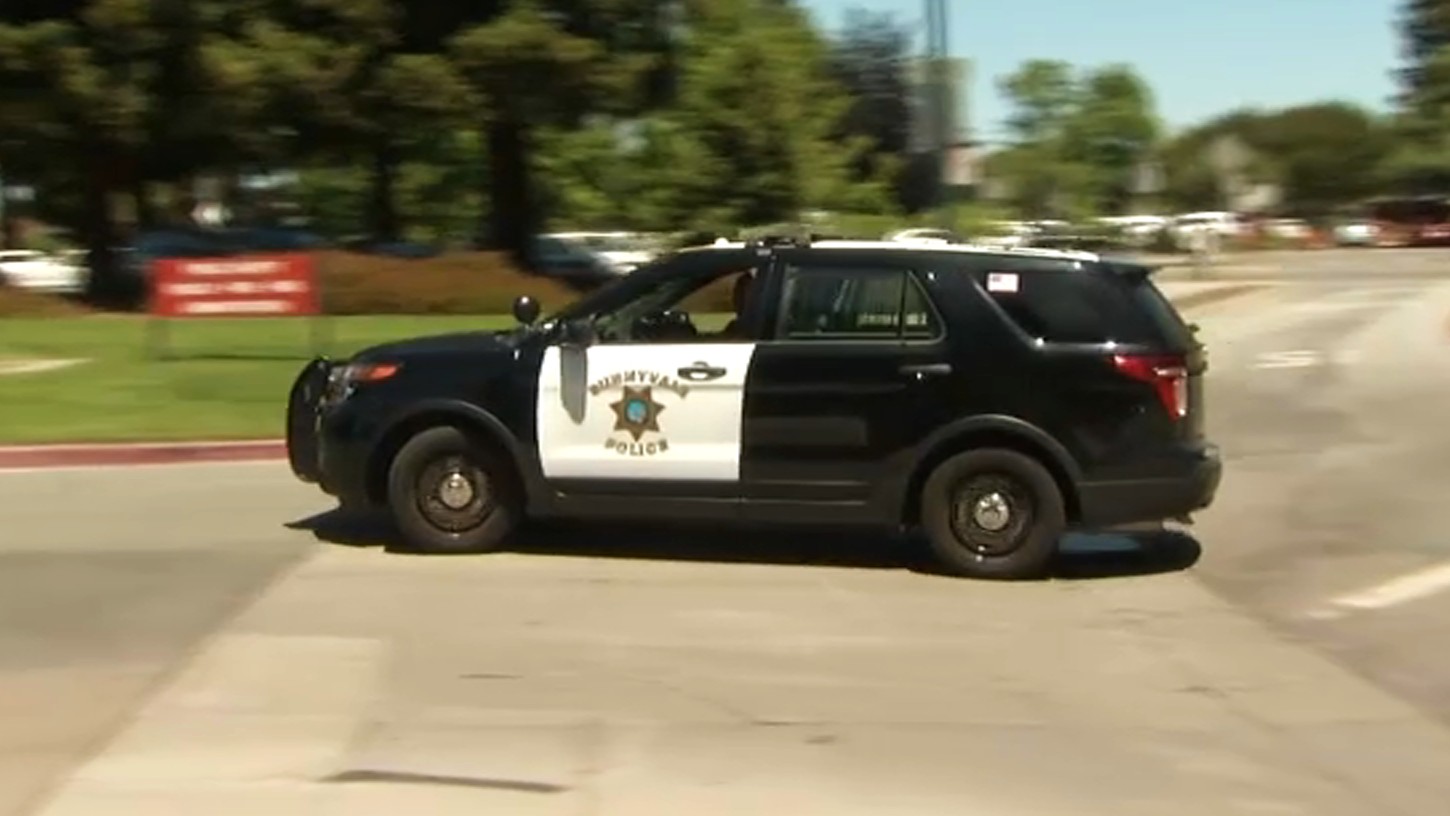Tom Frantz has been growing almonds near Bakersfield, California most of life, like his father and grandfather before him. He’s concerned about what is known as “produced water.”
“We’re not using it on my land,” he says.

Produced water comes from the Kern River Oil Fields a few miles to the east. It’s a byproduct of extracting oil. To extract one barrel of crude out of the earth, oil companies use between 10 and 100 barrels of water. That water is then filtered through tanks that contain crushed walnut shells, which adhere to the oil. The water then travels into ponds where it is skimmed to remove oil from the surface. If necessary, the water returns once again to the filtering process before being blended with fresh water. It then travels down canals where it is delivered to about 90 farms in the Bakersfield area. Farmers in the area are using more than 20 million gallons of this water each day. Oil companies and the Cawelo Water District have tested the water and assured the farmers that the water is safe. Those farmers sell their produce to the Bay Area and throughout the country, sometimes as organic products.
While there are regulations that require companies involved in fracking to reveal the chemicals in their operations, no such rules exist for traditional oil extraction. Last year, the Central Valley Water Board ordered the oil companies to reveal the chemicals they are using. The companies responded with a list of 173 chemicals. Sixty-six of those chemicals are proprietary “trade secrets.”
“From a food safety perspective, the thing we’re most concerned about,” says Seth Shonkoff, “is whether these chemicals are going to migrate from the water into the plant, and particularly into the edible portion of the plant.”
Shonkoff and a team of scientists from UC Berkeley, Lawrence Berkeley Labs and PSE, an Energy Science Institute – have recently completed a report that identifies the chemicals and their toxicities. While they couldn’t analyze the chemicals classified as trade secrets, with respect to the rest of them, Shonkoff says, “Forty percent of those rise to the ‘chemicals of concern’ category.
A total of 10 chemicals from the list were classified as either carcinogenic or possibly carcinogenic in humans by IARC, the International Agency for Research on Cancer.

Back in Bakersfield, Scott Smith has been taking water samples in the canals that feed oil waste water to the fields. Smith works for Water Defense, a non-profit group devoted to clean water. As he shows the Investigative Unit a pond that holds some of the waste water, he says, “Smell this – that’s like a kerosene smell, that’s oil! You see that steam coming up – that’s hot oil wastewater.” Smith has cleaned up after oil spills all over the world, but he’s shocked by what he has seen here in the Central Valley. “We detected chromium,” he says, “they did not. We detected nickel. We detected light hydrocarbons, they didn’t even test for it. You can’t find what you don’t look for.”
Local
Neither Smith nor Shonkoff have data that says the water is not safe, but they are convinced that more testing is needed before this practice continues. “You should care about what’s going on here if you eat almonds, grapes, tangerines, lemons, citrus, if you shop for organic food,” says Smith. What is happening in the Cawelo Water District in Kern County is coming into your home every night at your kitchen table and your dining room table.”
In fact, food from the Central Valley is shipped all over the United States, producing eight percent of the nation’s agriculture.
The Chevron Corporation declined requests for an interview, but gave NBC Bay Area News a statement:
“Protecting people and the environment is one of Chevron’s core values.
Cawelo’s blended produced water supply met all applicable regulatory standards for agricultural use… and showed no cause for concern.”
The Cawelo Water District says they are continuing to do monthly and quarterly tests of the oil waste water and that so far - all tests show that it’s safe for irrigating crops.
Blake Sanden is an irrigation engineer in the Bakersfield area. He’s been working with produced water, and says he’s convinced that any chemical contaminants are at very low levels. He says, “The analyses that I’ve seen in many cases shows a detection of those materials but quite often, even below drinking water standards.”
But Tom Frantz, the longtime almond farmer, isn’t convinced: All they can say it hasn’t been proven definitively to be dangerous yet, so let’s continue. That’s what they’re saying. They’re telling us: prove it’s dangerous and we might stop.




